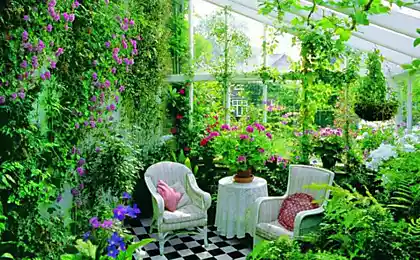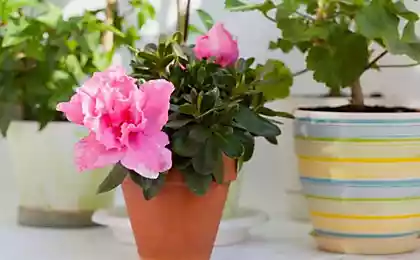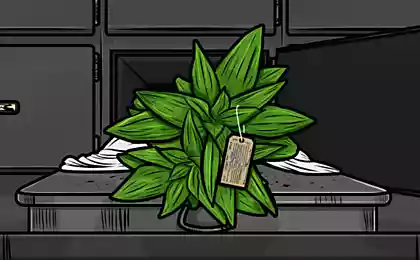827
Attention! Threat to health houseplants
Are there any houseplants are dangerous to life and health? Having read the horror stories in the network, many are frantically looking for accurate information about the harmful and dangerous potted flowers and plants, and some hastily get rid of their Pets.
So can plants to pose a threat to your health? For frivolous people – of course YES! Just as dangerous washing powders and medicines, vinegar and citric acid, paints and varnishes. If these substances come to the children if lying unattended and not used for the purpose, that they are dangerous!
Some plants in your house have a caustic juice in contact with the skin and mucous membranes of the juice causes irritation. This is manifested by redness, watering, burning eyes.
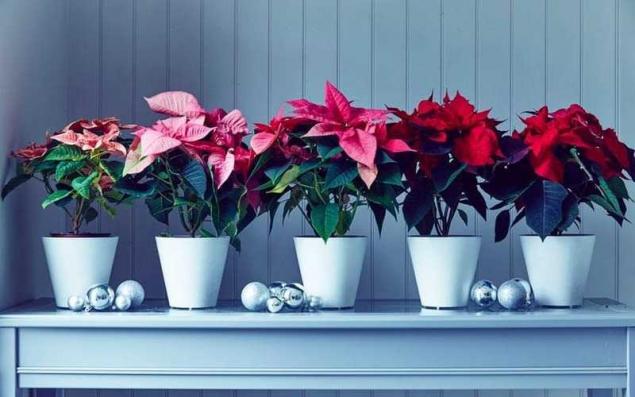
Poinsettia
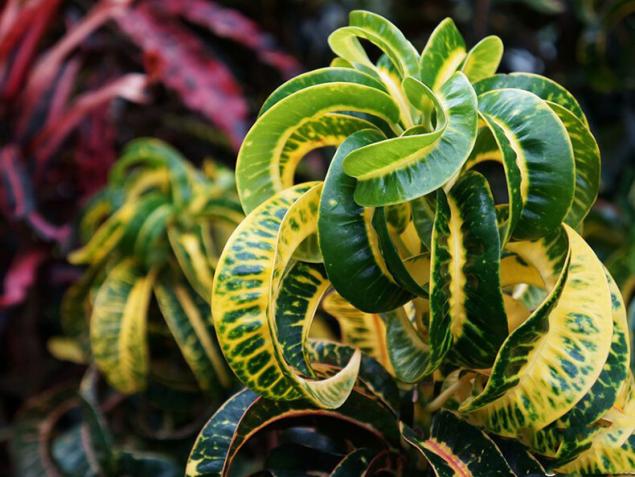
Codiaeum (Croton)
Such plants include almostall Euphorbia – poinsettia (Christmas star), Euphorbia milii, codiaeum (Croton), akalifa. When pruning these plants flows a white juice. When they recommend good hand washing and not to touch eyes and mouth. Poisonous and many other plants – dieffenbachia, monstera, aglaonema, ficus.
Almost all lovers of flowers will say that they never had any problems with poisoning their plants. And tell the truth! For them habitually and naturally take good care of flowers, to wash their hands after planting and pruning and do not chew in the process a cookie. But explain that to a two-year a curious kid! If the family has a small child, it is best to keep such plants away from him.
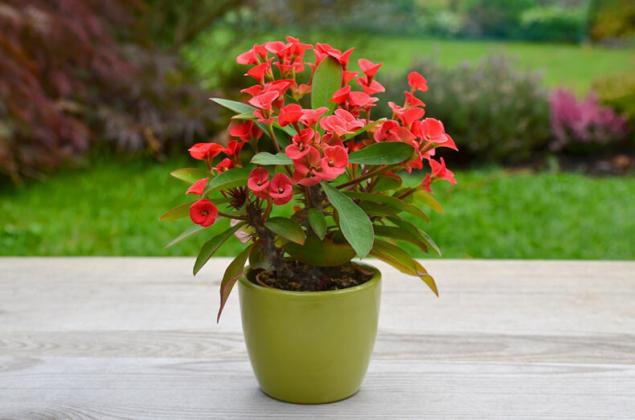
Euphorbia Milii
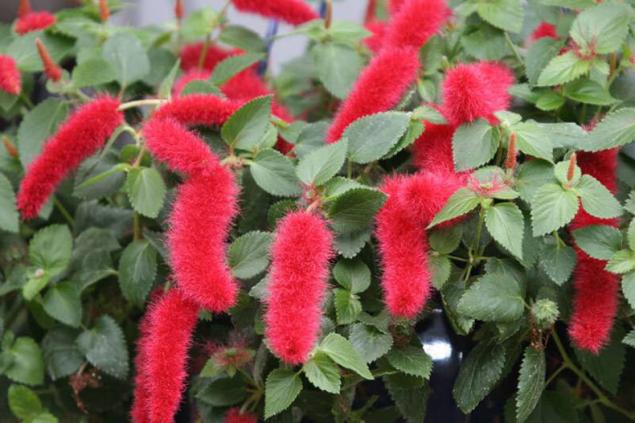
Akalifa
The most dangerous plants that could cause allergies in some of the family members. If you noticed that after contact with the flower you experience itching, a rash, severe salivation, swollen eyes, lips or other body parts, be careful — this is a dangerous Allergy symptoms!
Allergies can have asthma symptoms: shortness of breath, cough. In this case, you need to get rid of dangerous plants. If severe allergic reaction occurs, the child should immediately contact a doctor! Allergies in some people and cause long-known plants geranium, Primula. May not the plant itself is dangerous, and the substrate in which it grows, mold it, for example.
But for the vast majority of people such a reaction to homemade flowers are not typical, and fear of geranium, which in the last century is grown in every home is not reasonable.
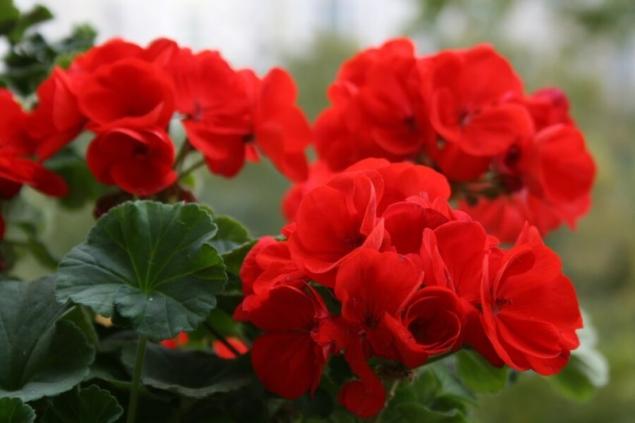
Geranium
Some beautiful ornamental plants, such as nightshade or pepper with bright, beautiful fruit can be dangerous for small children only. They will want to try a poisonous inedible fruit and get poisoned. The number of child poisoning caused by plants, in the first place is exactly nightshade logoperiodic. Such plants cannot be used for landscaping nursery.
Extremely toxic stems and leaves beautiful azaleaspoisonous hydrangea, philodendron , and plants of the Amaryllidaceae family also contain hazardous substances. If swallowed, they can cause serious injury. The question is whether a grown man to eat the unpalatable leaves or chew the bulbs? As a small child, left unattended, can try!

Oleander
Very dangerous also plant of the family Kutrovyh (Apocynaceae) and its most famous representative of the oleander. The plants in this family — adenium, Carissa, mandevilla contain substances that affect heart activity. From the contemplation of these beautiful plants can do no harm, a serious danger threatens only those who eat the nasty-tasting flowers or leaves. There are people who are trying to be treated with unknown plants, you can't do it.
You should also be careful in the period of abundant flowering plants, especially those with strong flavor. Often they are kept in a closed unventilated room, which may cause headache, dizziness.
Houseplants in the house create a pleasant atmosphere of beauty and comfort, the air is saturated with oxygen and cleanse it from harmful impurities give joy and good mood. And it is from reasonable handling of flowers and ornamental plants the inhabitants of the house depends on their safety.
Before you read the list of "harmful" plants, and hurry to throw away their Pets, you should think about. Plants sold in flower shops in different countries, the flower business engaged in a solid company. They don't need millions in lawsuits of people affected by or dieffenbachia oleander in a pot. Therefore, the risks are evaluated and calculated, if properly used, all plants from the store safe. Where did the rumors about the danger?
Myths about incredibly dangerous plants generate stories that are associated with the manifestations of extremely severe allergic reactions in some people. Any recommendations of a General nature is irrelevant here, reactions are very individual.
It will be great:
Decembrist in your home: features of care and the secrets of flowering
The reproduction of Phalaenopsis orchids: what you need to know
The fact that children require constant supervision, is also not discussed. If the child broke a bitter leaf and chews it, if dug out of the pot the onion and tasted, it is not the plants fault, and a bad babysitter.
It is important to understand that house plants not for eating, do not eat inside. They are for beauty and air quality. Important — be sure to observe precautions in the care of home flowers, wear gloves when transplanting or pruning. published
Source: greendom.net/articles/119-alarm-plant.html
So can plants to pose a threat to your health? For frivolous people – of course YES! Just as dangerous washing powders and medicines, vinegar and citric acid, paints and varnishes. If these substances come to the children if lying unattended and not used for the purpose, that they are dangerous!
Some plants in your house have a caustic juice in contact with the skin and mucous membranes of the juice causes irritation. This is manifested by redness, watering, burning eyes.

Poinsettia

Codiaeum (Croton)
Such plants include almostall Euphorbia – poinsettia (Christmas star), Euphorbia milii, codiaeum (Croton), akalifa. When pruning these plants flows a white juice. When they recommend good hand washing and not to touch eyes and mouth. Poisonous and many other plants – dieffenbachia, monstera, aglaonema, ficus.
Almost all lovers of flowers will say that they never had any problems with poisoning their plants. And tell the truth! For them habitually and naturally take good care of flowers, to wash their hands after planting and pruning and do not chew in the process a cookie. But explain that to a two-year a curious kid! If the family has a small child, it is best to keep such plants away from him.

Euphorbia Milii

Akalifa
The most dangerous plants that could cause allergies in some of the family members. If you noticed that after contact with the flower you experience itching, a rash, severe salivation, swollen eyes, lips or other body parts, be careful — this is a dangerous Allergy symptoms!
Allergies can have asthma symptoms: shortness of breath, cough. In this case, you need to get rid of dangerous plants. If severe allergic reaction occurs, the child should immediately contact a doctor! Allergies in some people and cause long-known plants geranium, Primula. May not the plant itself is dangerous, and the substrate in which it grows, mold it, for example.
But for the vast majority of people such a reaction to homemade flowers are not typical, and fear of geranium, which in the last century is grown in every home is not reasonable.

Geranium
Some beautiful ornamental plants, such as nightshade or pepper with bright, beautiful fruit can be dangerous for small children only. They will want to try a poisonous inedible fruit and get poisoned. The number of child poisoning caused by plants, in the first place is exactly nightshade logoperiodic. Such plants cannot be used for landscaping nursery.
Extremely toxic stems and leaves beautiful azaleaspoisonous hydrangea, philodendron , and plants of the Amaryllidaceae family also contain hazardous substances. If swallowed, they can cause serious injury. The question is whether a grown man to eat the unpalatable leaves or chew the bulbs? As a small child, left unattended, can try!

Oleander
Very dangerous also plant of the family Kutrovyh (Apocynaceae) and its most famous representative of the oleander. The plants in this family — adenium, Carissa, mandevilla contain substances that affect heart activity. From the contemplation of these beautiful plants can do no harm, a serious danger threatens only those who eat the nasty-tasting flowers or leaves. There are people who are trying to be treated with unknown plants, you can't do it.
You should also be careful in the period of abundant flowering plants, especially those with strong flavor. Often they are kept in a closed unventilated room, which may cause headache, dizziness.
Houseplants in the house create a pleasant atmosphere of beauty and comfort, the air is saturated with oxygen and cleanse it from harmful impurities give joy and good mood. And it is from reasonable handling of flowers and ornamental plants the inhabitants of the house depends on their safety.
Before you read the list of "harmful" plants, and hurry to throw away their Pets, you should think about. Plants sold in flower shops in different countries, the flower business engaged in a solid company. They don't need millions in lawsuits of people affected by or dieffenbachia oleander in a pot. Therefore, the risks are evaluated and calculated, if properly used, all plants from the store safe. Where did the rumors about the danger?
Myths about incredibly dangerous plants generate stories that are associated with the manifestations of extremely severe allergic reactions in some people. Any recommendations of a General nature is irrelevant here, reactions are very individual.
It will be great:
Decembrist in your home: features of care and the secrets of flowering
The reproduction of Phalaenopsis orchids: what you need to know
The fact that children require constant supervision, is also not discussed. If the child broke a bitter leaf and chews it, if dug out of the pot the onion and tasted, it is not the plants fault, and a bad babysitter.
It is important to understand that house plants not for eating, do not eat inside. They are for beauty and air quality. Important — be sure to observe precautions in the care of home flowers, wear gloves when transplanting or pruning. published
Source: greendom.net/articles/119-alarm-plant.html
















